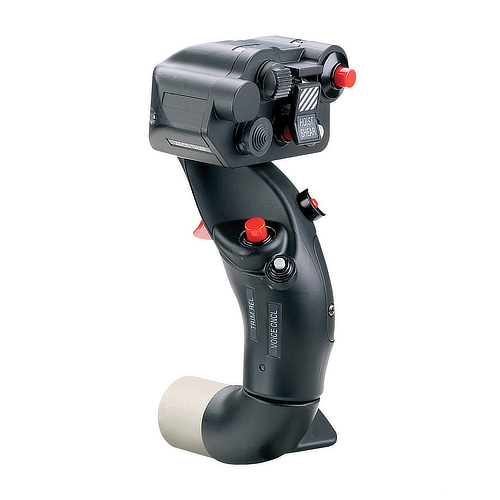Nowadays if you ask someone to describe a joystick you will be given a multiple of answers ranging from full-size aircraft joystick, CCTV controllers or a thumb style gaming joysticks. For a device that is so well known not many people know much about the history of the joystick, and up until this article I was among this crowd.
Whilst here at Live Electronics we understand the modern technology around joysticks and represent some of the best manufacturers in the world we thought it would be a good idea to investigate the history of these now tiny and precise human interface devices.
Amazingly there is no confirmed origin for the word joystick! According to Engadget.com [1] “Some researchers feel its origins are the result of “the exhilaration felt by an early pilot’s journey into the air,” (a stick that makes you happy) while others believe it is named for a Missouri pilot and inventor, James Henry Joyce (the Joyce stick)”. Thankfully the history surrounding joysticks is a bit more solid.
As we know, a joystick is a device which pivots on a base and then relays this direction to a control device which carries out a particular function at that point. The first confirmed use of such a device was in 1908 by the French aviation pioneer Louis Bleriot in his Bleriot VIII experimental aircraft. The device used by Louis Bleriot was purely mechanical and we need to jump forward to 1926 when the first electronic joystick was created.
Patented by the US inventor C. B. Mirick whilst working for the United States Naval Research Laboratory this device was a 2-axis electronic joystick believed to be designed for operating unmanned aerial vehicles (UAV’s), Mirick even states “My control system is particularly applicable in manoeuvring aircraft without a pilot.”[2]
The next step forward was in 1944 by German scientists to control their Henschel Hs 293 glide bombs and unpowered Fritz-X missiles. Whilst still utilising a 2-axis design the new device used electrical on-off signals rather than potentiometers to be used more easily as part of a radio control transmitter system. This allowed certain bomber aircraft to accurately guide both rocket-propelled and unpowered guided missiles onto their targets.
Joystick technology continued to develop slowly throughout the 50’s, 60’s and 70’s and was used in NASA’s Apollo programme, most notably in the Apollo lunar lander test models. However, this was about to change and in the early 1980’s home gaming machines were increasing, the first joystick-controlled gaming controller was for the Atari 5200 in 1982.
The idea of using joysticks for gaming began to gain traction with the first thumb style joystick been used in 1988 with the release of the NES MAX. The NES MAX showed how useable and intuitive joysticks could be in gaming, but it wasn’t until the release of Sony’s PlayStation Analog joystick in 1996 that the gaming joystick really took off due to its ability to work so well within a 3D world.
Outside of gaming, the joystick found its home not only in aviation applications but also in controlling machines such as UAV’s and sub-sea remotely operated vehicles (ROV’s), construction equipment, off-road vehicles, surveillance cameras, wheelchairs and multiple military applications.
Miniature joysticks have come a long way since the Mirick’s 1926 design with companies such as Ultra MSI, OTTO Controls and Ruffy Controls creating potentiometer and Hall Effect style joysticks which are smaller and lighter with better environmental protection and more precise than ever before. Due to their familiar and instinctive nature, combined with exceptional precision, joysticks are being designed into more and more high-end products such as human controlled robotics and medical equipment.
After years of gaming and now seeing how design engineers are incorporating joysticks into their amazing new products, the future looks very bright for their use as a human interface device and given the choice I would definitely choose the first potential origin of the word Joystick as giving a feeling of exhilaration.
See our range of joysticks here.

